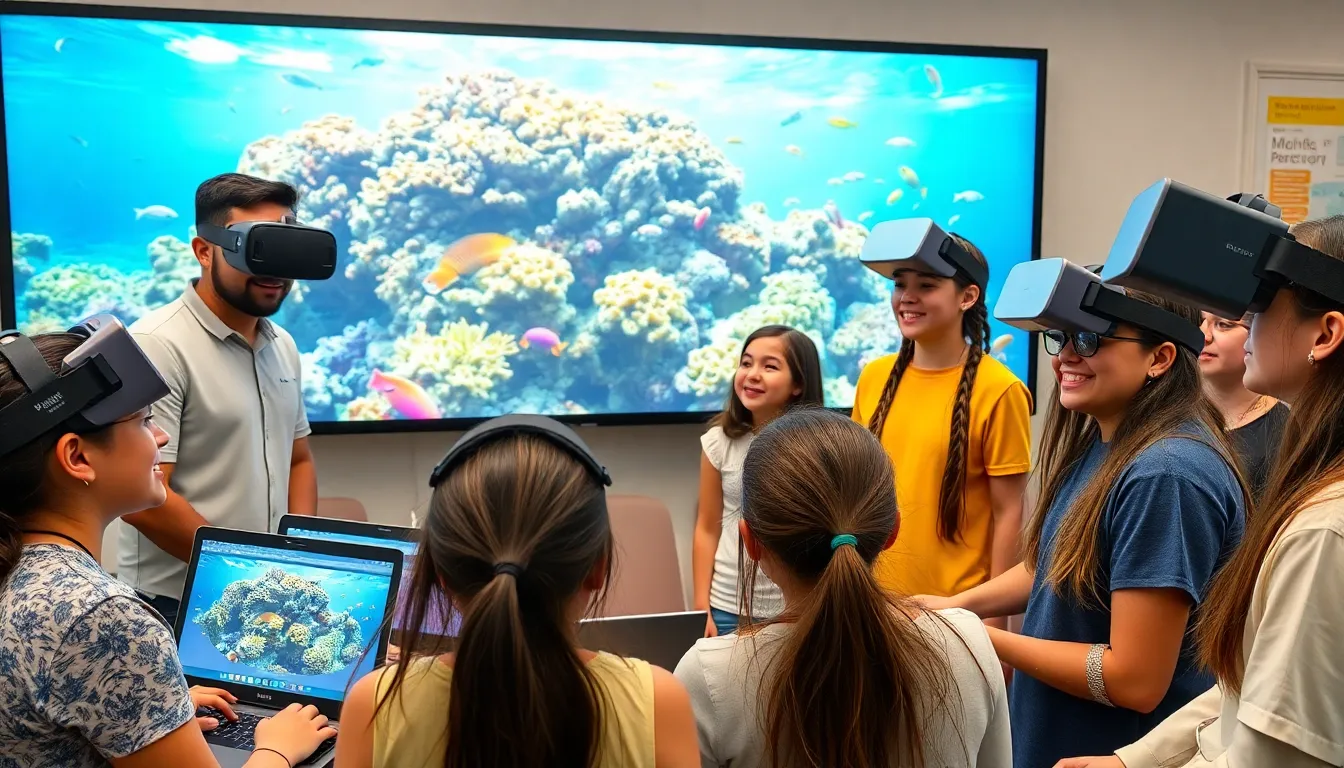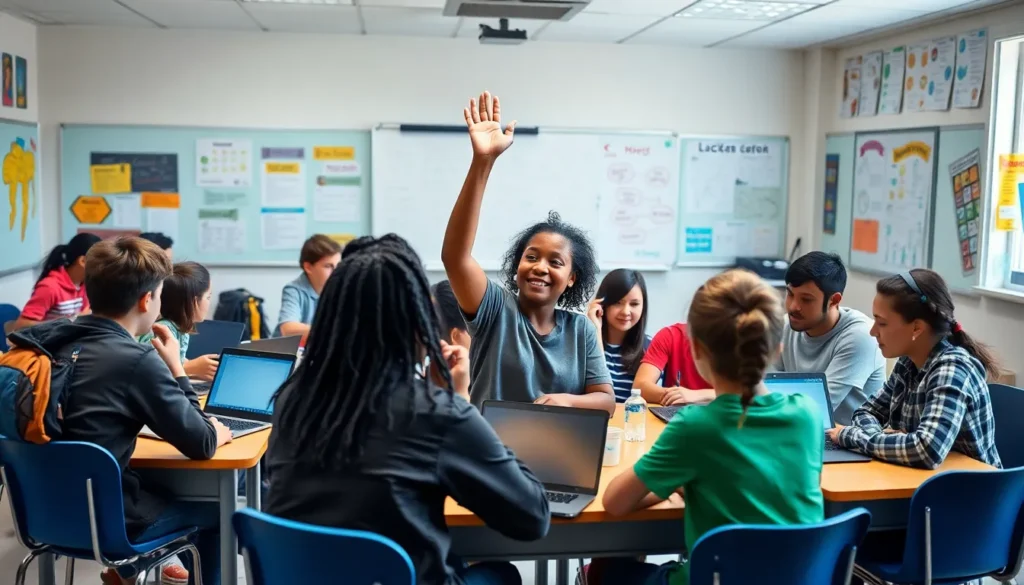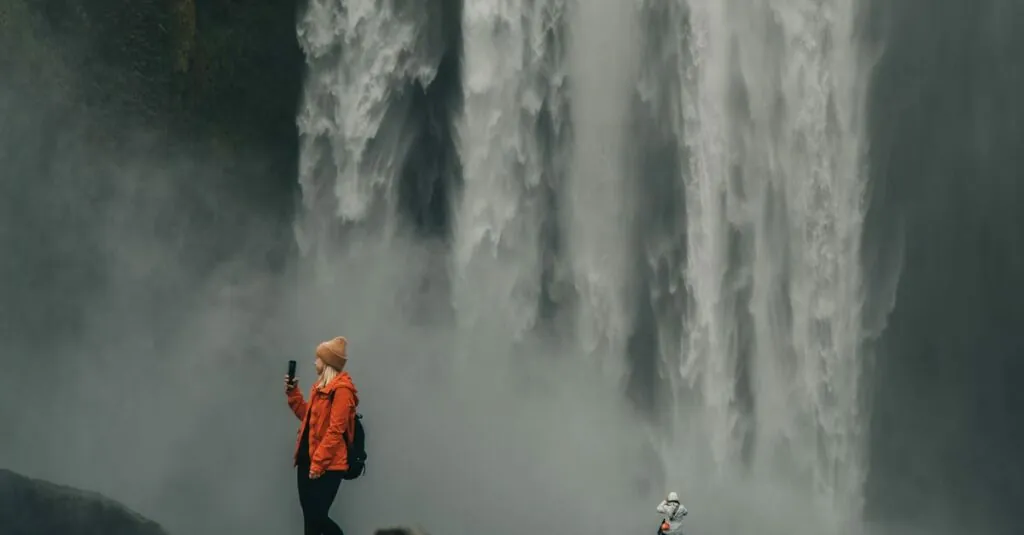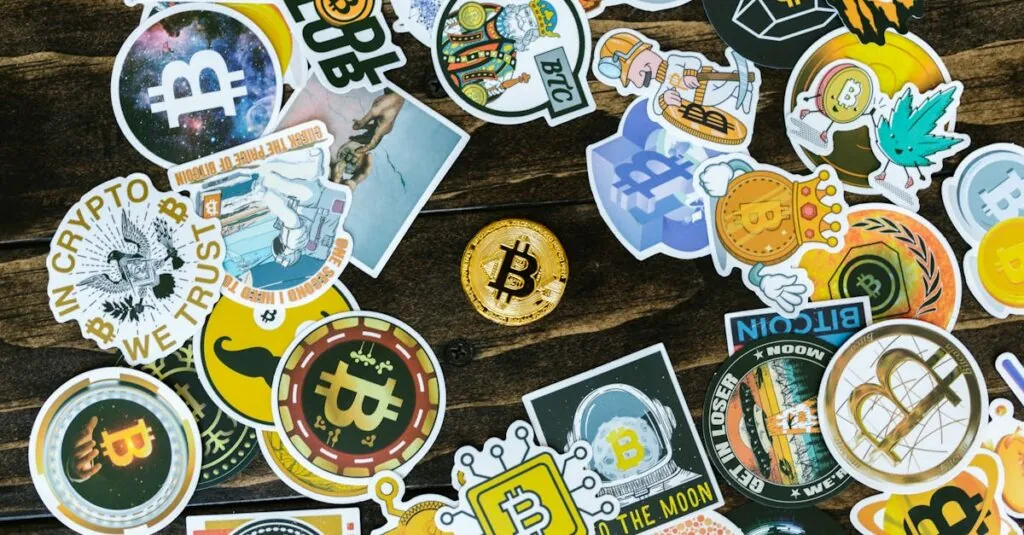Table of Contents
ToggleImagine exploring the wonders of the world without ever leaving your couch. Sounds like a dream, right? Welcome to the age of virtual field trips, where classrooms stretch beyond four walls and learning becomes an adventure. From the depths of the ocean to the peaks of the Himalayas, students can now embark on thrilling expeditions with just a click.
Overview of Virtual Field Trips
Virtual field trips enable students to engage with content in immersive, interactive ways. Various platforms provide access to museums, historical sites, and natural wonders. Students experience environments that spark curiosity and enhance comprehension.
Technological advancements play a crucial role in making these trips accessible. High-definition videos, 360-degree views, and live interactions with experts bring learning to life. For instance, learners can virtually walk through the Louvre Museum or dive into the Great Barrier Reef without leaving their classrooms.
Educational benefits are significant. Students strengthen critical thinking skills as they analyze and interpret information presented during these trips. Educators report increased enthusiasm for subject matter, with learners displaying heightened interest and retention.
Cost-effectiveness makes virtual field trips an appealing option. Institutions save resources by eliminating transportation and accommodation expenses associated with traditional field trips. Many virtual experiences are available at low or no cost, making them accessible to diverse student populations.
Flexibility stands as another advantage. Virtual field trips fit seamlessly into various curricular schedules, accommodating diverse learning environments. Teachers can tailor experiences to enhance specific themes or units, ensuring a deeper understanding of concepts.
Virtual field trips present opportunities for exploration and adventure. They complement traditional education by enriching content and providing memorable experiences. As technology evolves, these digital excursions will continue to transform the learning landscape.
Benefits of Virtual Field Trips
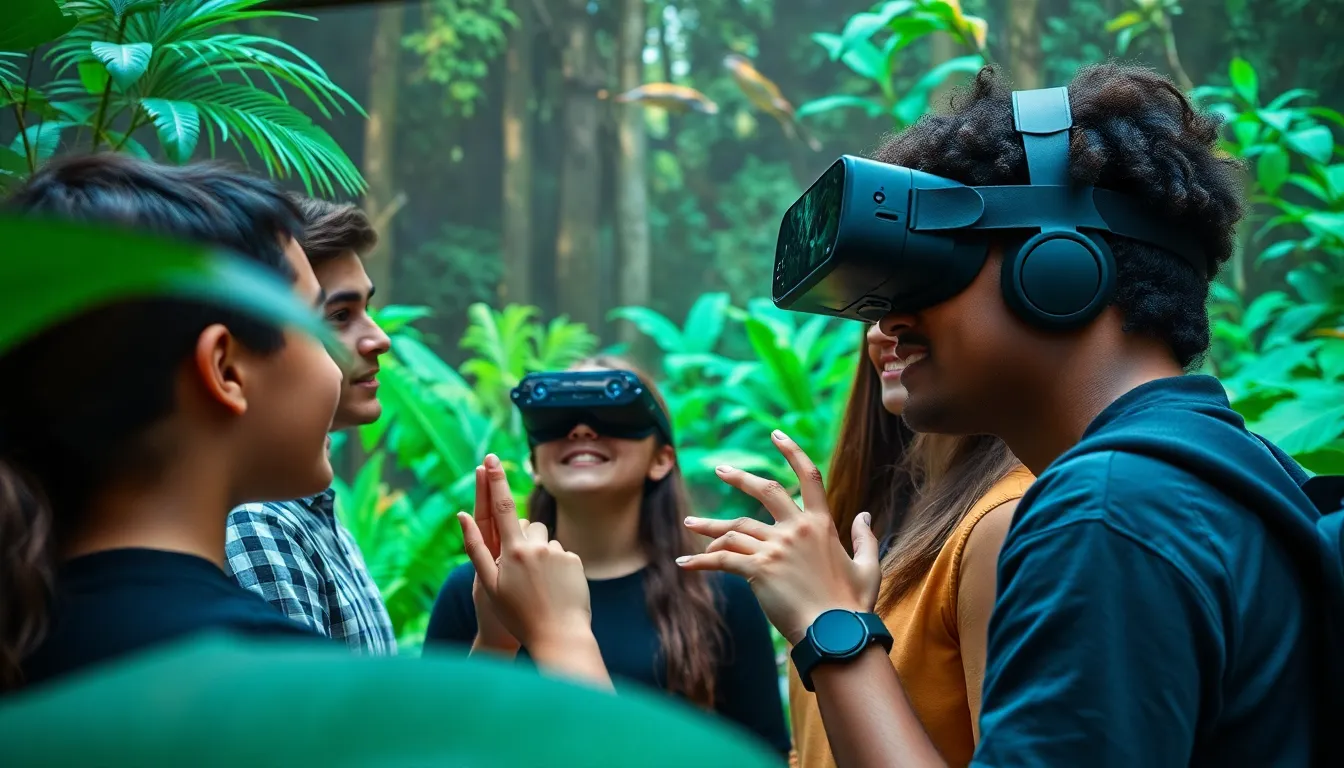
Virtual field trips offer numerous advantages for learners, enhancing education in innovative ways.
Accessibility to Remote Locations
Many students experience barriers when visiting remote locations. Virtual field trips eliminate these obstacles by providing instant access to sites like the Amazon rainforest or ancient ruins in Greece. This technology opens doors for students who may lack resources for traditional field trips. Engagement increases as learners explore diverse environments, cultures, and ecosystems from classrooms. Familiarity with different places broadens students’ perspectives and deepens their understanding of global issues. Distinct virtual experiences spark curiosity and inspire future explorations outside the classroom.
Enhanced Learning Experience
Virtual field trips create interactive learning environments that captivate students. Immersive experiences lead to heightened engagement and improved information retention. Educators utilize various multimedia resources, like videos and interactive quizzes, to enhance lesson plans. Students can virtually navigate historical landmarks or famous museums, experiencing educational content firsthand. Real-time discussions with experts during virtual tours enrich contextual understanding and critical thinking skills. Enhanced accessibility encourages collaboration among peers, promoting discussions and critical analyses of shared experiences. Through these enriched learning opportunities, students connect academic concepts to real-world contexts effectively.
Types of Virtual Field Trips
Virtual field trips can be categorized into distinct formats, each offering unique features that enhance learning experiences.
Interactive Online Platforms
Interactive online platforms provide real-time engagement and participation. These platforms allow students to explore museums, historical sites, and natural landmarks interactively. Learners can navigate through 360-degree views, click on exhibits for more information, or participate in live Q&A sessions with experts. This dynamic format fosters deeper understanding and interest in various subjects. Examples include Google Arts & Culture and Discovery Education, which offer extensive resources and virtual experiences tailored to different educational needs.
Pre-recorded Tours
Pre-recorded tours present a flexible option for educators and students alike. These tours feature expertly narrated videos and visual content highlighting significant landmarks, nature, and cultural experiences. Accessing these resources at any time promotes convenience for learning, allowing students to revisit complex topics or explore at their own pace. Well-known programs like National Geographic and the BBC provide engaging pre-recorded content, making it easy for classrooms to integrate rich, informative experiences into their curricula.
Tools and Technologies for Virtual Field Trips
Various tools and technologies enhance the experience of virtual field trips. Effective use of these resources makes learning immersive and engaging.
Virtual Reality (VR) and Augmented Reality (AR)
Virtual Reality and Augmented Reality offer transformative experiences. Immersive environments let students explore locations like never before. 360-degree views and interactive simulations increase engagement. VR headsets provide realistic scenarios, allowing students to feel they are part of the environment. AR apps overlay digital information onto real-world locations, enriching understanding of complex concepts. Both technologies encourage deeper exploration of historical sites and natural wonders. Students gain unique perspectives and experiences invaluable for their education.
Video Conferencing Applications
Video conferencing applications facilitate live interactions during virtual field trips. Platforms like Zoom and Microsoft Teams allow real-time engagement with experts. Students can ask questions and participate in discussions, enhancing learning outcomes. Screen sharing capabilities enable educators to showcase relevant materials. Teachers can guide students through virtual tours, tailoring presentations to classroom needs. Furthermore, these applications create a collaborative learning environment, promoting peer interaction and knowledge sharing. The immediacy of virtual engagement fosters a richer educational experience.
Challenges of Virtual Field Trips
Challenges arise in virtual field trips, impacting their overall effectiveness. These can include technology limitations and engagement issues.
Technology Limitations
Technology limitations frequently hinder the virtual field trip experience. Not all students possess access to high-speed internet or suitable devices. Low-quality connections can result in lagging video and disrupted audio, making participation difficult. Additionally, some platforms require specific software or updates, which may not be available to every student. In some instances, educators face a lack of training to effectively utilize advanced tools. This can lead to underutilization of immersive features that elevate the learning experience. Overcoming these challenges necessitates schools securing reliable technology resources.
Engagement and Interaction
Engagement and interaction often pose significant hurdles in virtual field trips. Students may struggle to maintain focus during lengthy videos or presentations without hands-on activities. Passive viewing can reduce the retention of information. Furthermore, opportunities for real-time interaction vary across platforms. Without the chance to ask questions or participate in discussions, students miss valuable learning moments. Teachers face challenges in fostering a dynamic classroom environment that encourages participation. Striking a balance between captivating content and interactive elements is critical for maximizing student involvement.
Virtual field trips redefine the educational experience by merging technology with exploration. They break down barriers to learning and make global adventures accessible to all students. With the right tools and platforms, educators can create engaging and immersive experiences that foster curiosity and critical thinking.
Despite some challenges, the potential for enhanced learning remains significant. As technology continues to advance, virtual field trips will evolve, offering even more dynamic ways to explore the world. Embracing these innovative experiences can inspire a new generation of learners, making education not just informative but also exciting and interactive.

